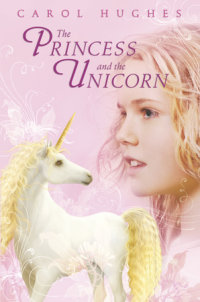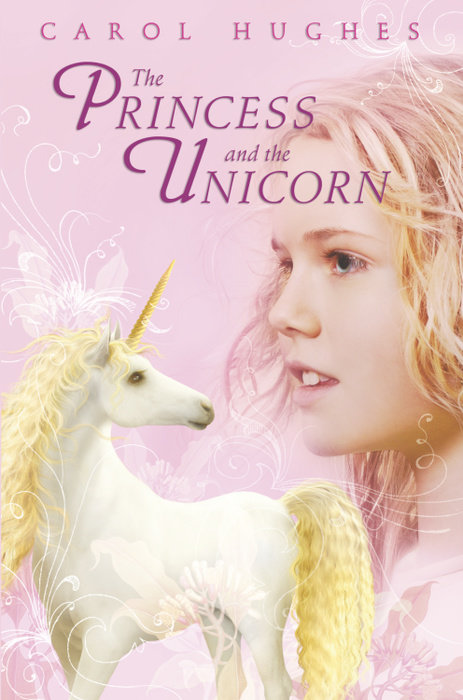Swinley Castle, that world-famous ancient monument and official Royal residence, stands atop a high hill some thirty miles west of London. It is one of the most splendid castles in the world, and on a clear day the magnificent honey-colored turrets and towers can be seen from miles away.
Like many Royal buildings nowadays, Swinley Castle is open to tourists for a small entrance fee. A visitor may view the great staterooms, the chapel, and the Royal kitchens. They may even see a Royal bedchamber or two, but no more. The remainder of the castle is strictly out of bounds. This is because it is still used frequently by the Royal Family. The king, the queen, and their only child, H.R.H. the Princess Eleanor, often occupy a wing of private rooms.
When the Royal Family is in residence, the union flag flies from the castle's flagpole. But don't think that if you are visiting the castle and the flag is flying, you will catch sight of any of Their Highnesses. They tend to keep to…
Swinley Castle, that world-famous ancient monument and official Royal residence, stands atop a high hill some thirty miles west of London. It is one of the most splendid castles in the world, and on a clear day the magnificent honey-colored turrets and towers can be seen from miles away.
Like many Royal buildings nowadays, Swinley Castle is open to tourists for a small entrance fee. A visitor may view the great staterooms, the chapel, and the Royal kitchens. They may even see a Royal bedchamber or two, but no more. The remainder of the castle is strictly out of bounds. This is because it is still used frequently by the Royal Family. The king, the queen, and their only child, H.R.H. the Princess Eleanor, often occupy a wing of private rooms.
When the Royal Family is in residence, the union flag flies from the castle's flagpole. But don't think that if you are visiting the castle and the flag is flying, you will catch sight of any of Their Highnesses. They tend to keep to their own quarters when the castle is open to the public, and who could blame them? They may be Royal, but they are still people.
Like the castle itself, the extensive grounds of Swinley are beautiful. Within the castle wall there are the Royal gardens--kitchen, herb, and formal--and a few velvety green lawns where the princess occasionally plays croquet with her governess. Beyond the castle wall a large meadow rolls away to the south. It dips down into a valley and then rises in a long sweep to the edge of the Great Forest of Swinley, one of the last truly ancient forests in Europe.
Swinley Forest is fiercely protected. No human, neither gardener nor tree surgeon nor member of the Royal Family, has set foot in those woods for a century. The forest is an ecological miracle and a national treasure. It is also a little bit spooky.
One summer morning when Their Majesties were still slumbering in their Royal beds, much was happening in a part of their kingdom that none of them knew existed. The ancient fairy town of Swinley Hope is situated in the exact center of the ancient forest of Swinley, and it is here, in this long-forgotten outpost of the fairy world, that our story begins.
It was market day in Swinley Hope, and although the sun was only just up, carts laden with all sorts of summer goodies were rolling into the market square. Merchants and farmers were setting up their stalls. Wild strawberries as big as a fairy's head, bushels of tiny truffles, and mounds of early cranberries were being carefully arranged on the wooden tables.
It promised to be a pleasant day. Nearly all the fairies, elves, and pixies who lived in the vast expanse of Swinley Forest came to town on market day. They came to sell, to buy, to gossip, or to just enjoy themselves.
High above the square a young fairy by the name of Joyce lay on her belly along a twig at the top of her home tree. Although she'd been up for hours, she was still in her pajamas and her hair was mussed from sleep.
"Ah, summer," she said, sitting up and stretching out her wings behind her. "Summer is absolutely my favorite season." And she really meant it. Then she remembered that every season was her favorite season, and she laughed, causing the twig to bounce beneath her weight.
Joyce and her family lived, like the other fairies in Swinley Hope, in a house that was built into the trunk of one of the trees. Joyce's house was the last house at the top of a horse chestnut tree that stood along the southern edge of the square.
Being so high up on the tree meant that theirs was not a large house. In fact, Joyce could stand in the kitchen/living/dining room and, by stretching out her arms, easily touch both walls at once. When she and her two sisters and her parents were all in that room together there was barely space to stand, and if her sisters decided to preen their wings at the same time, there was no room whatsoever. Joyce loved their small house, though. Living in the last house on the trunk meant she could climb out and sit in the branches and no one would wander past her on their way home. It was, in her opinion, a delightful place to live.

